Sharon Tate, The Doomed Star Murdered By The Manson Family
Mục Lục
Sharon Tate was a rising Hollywood star and pregnant with her first child when she was brutally murdered by the Manson family on August 9, 1969.
Sharon Tate is most closely associated with the Charles Manson murders that brought America’s optimistic, hippie-centric 1960s to a violent end. But though the death of Sharon Tate at the hands of the Manson family is what’s widely remembered, she was a fascinating star and beloved person in her own right.
Before she married world-renowned director Roman Polanski, the beautiful actress was slowly establishing herself as a promising young talent. From B-movies and guest spots on television to a breakthrough role in Valley of the Dolls, she was on the upswing at the time of her death on August 9, 1969.
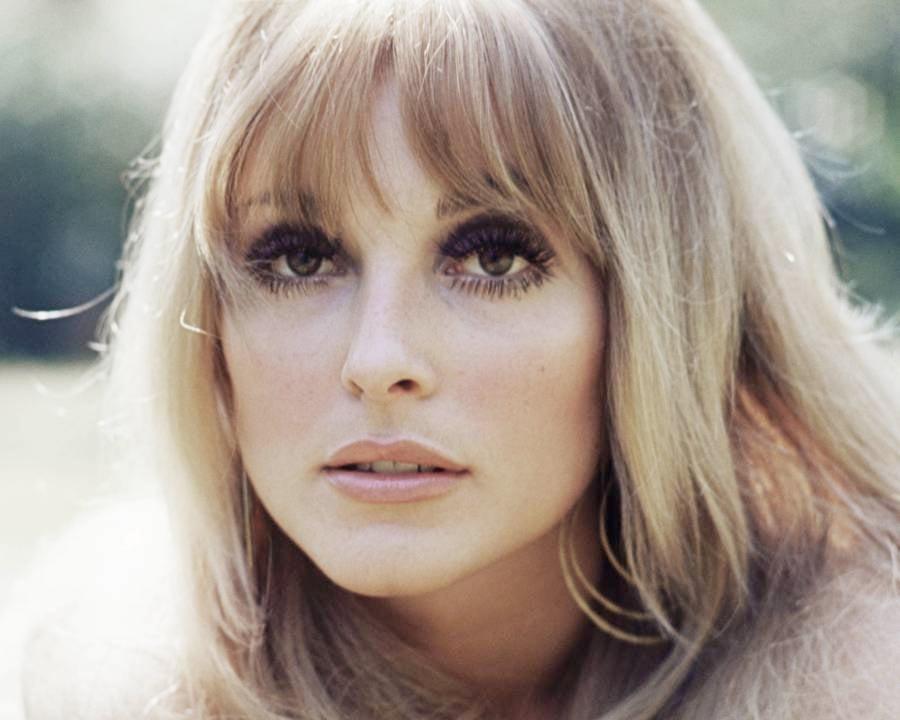
Unfortunately, Tate found herself in the crosshairs of an event that would signal the spiritual collapse of a generation, an irrevocable shift in the nation’s psyche. But long before the murder of Sharon Tate, she lived a largely charmed life that made her sudden end all the more tragic.
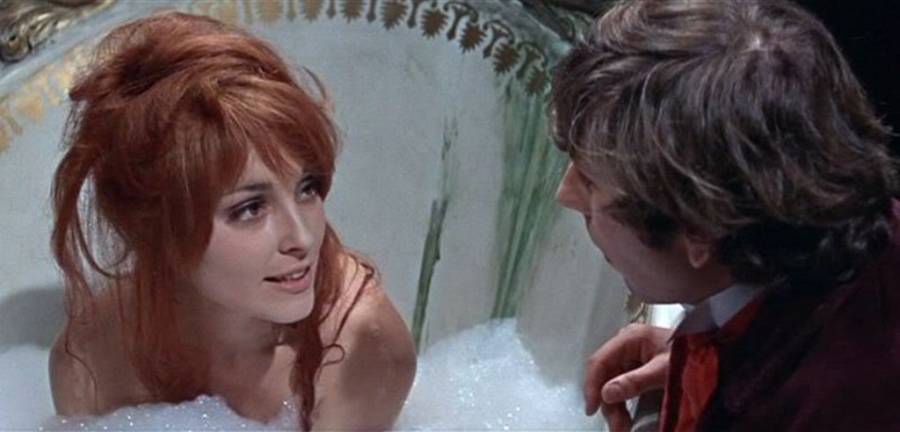
Sharon Tate’s Early Life, From Local Fame To A Career In Film
Born Sharon Marie Tate in Dallas, Texas on January 24, 1943, to Col. Paul Tate and Doris Tate, Tate possessed star power from a young age. At just six months old, she was crowned Miss Tiny Tot of Dallas after her grandmother submitted some of her photos to the pageant.
As an army brat, Tate bounced around the country. When she was 16, she was crowned Miss Richland, Washington, as well as the Queen of the Tri-City Autorama in Richland.
In 1960, the entire Tate family — including younger sisters Debra and Patricia — moved to Verona, Italy. Finally surrounded by fellow army brats at her American high school, Tate was a popular cheerleader and was crowned prom queen her senior year.
Unfortunately, Tate’s teenage years weren’t without tragedy. According to the 2016 biography by Ed Sanders, Sharon Tate: A Life, she told her future husband Roman Polanski that she was raped by a soldier in Italy when she was 17.
Tate revealed this to the young director on their very first date. Polanski claimed Tate told him the sexual assault “hadn’t left her emotionally scarred.”
As a young girl who enjoyed having an audience’s attention, Tate was already in pursuit of her ambitions. Though she was still in school and far from Hollywood, Tate scoped out her surroundings for any opportunity to get in front of the camera.
In 1960, she was featured on the cover of the American military newspaper Stars and Stripes as well as in an episode of The Pat Boone Chevy Showroom that was shot in Venice.
Tate landed her first film job a year later, as an extra in the swords-and-sandals movie Barabbas starring Anthony Quinn. Only 19 at the time, Tate’s mother allowed another actor working on the film — Jack Palance — to take her out on a date. She also briefly dated actor Richard Beymer after meeting him on a film set in Verona.

The summer of 1961 was Sharon Tate’s last in Verona. She seemed destined for a film career when, right after she graduated high school, her father was assigned to San Pedro, California, on the outskirts of Los Angeles.
Tate was happy to move. As a matter of fact, she was so eager that she beat her parents there by several months. She wanted to be a movie star and she didn’t see the point in waiting.
Sharon Tate Moves To California And Becomes A Star
“You must remember that I was shy and bashful when I reached Hollywood,” Sharon Tate told interviewer Robert Musel a few years after her arrival.
“My parents were very strict with me. I didn’t smoke or anything. I only had just enough money to get by and I hitchhiked a ride on a truck to the office of an agent whose name I had.”
“That very first day he sent me to the cigarette commercial job. A girl showed me how it should be done, you know taking a deep, deep breath and look ecstatic.”
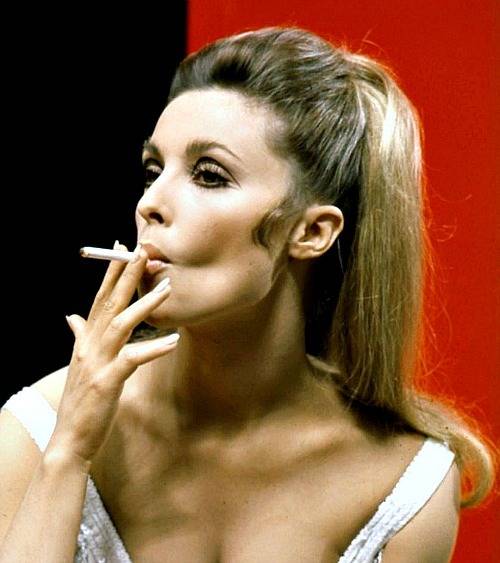
As a first-time smoker unaccustomed to nicotine, the young actress eventually passed out.
“That ended my career in cigarette commercials,” she laughed.
Tate was finding herself in early 1960s California. Hitchhiking was normal, smoking wasn’t viewed as a filthy habit as it is today, and hippie movement was just getting started. The early 1960s were a time of American optimism, peace, and love.
Unfortunately, that would all come tumbling down a few years later — with Sharon Tate as the tip of the nosedive.
In 1963, the 20-year-old got her first big break in showbiz. Her audition for the sitcom Petticoat Junction got her noticed by The Beverly Hillbillies producer Martin Ransohoff, head of the Filmways production studio. Stunned by her beauty, a producer brought Tate to Ransohoff’s office, who did a film test on the spot.
“Baby, we’re going to make you a star,” Ransohoff told Tate, who had no acting experience.
He offered her a seven-year contract. Naturally, Sharon Tate accepted.
Once Tate’s agent ensured a monthly $750 as part of Tate’s contract, the excited actresses moved into the Hollywood Studio Club — an all-women residence that had hosted such Hollywood legends as Marilyn Monroe, Rita Moreno, and Kim Novak.

Much of Tate’s personal life was only revealed in the aftermath of her death. Though the starlet seemed poised for greatness and global fame — before she did any substantial film work, European newspapers already heralded her as the next Marilyn Monroe — it was the brutal butchering on Cielo Drive that immortalized her for all time.
According to what her mother eventually told police, Tate got involved with French actor Philippe Forquet the year she signed her contract. The pair lived briefly in New York together while she studied with acting legend Lee Strasberg, and returned to Los Angeles as an engaged couple.
There were some initial doubts whether or not the pair was serious about their romantic affections, or if this was part of the studio system’s strategy to drum up appeal and publicity for Tate. Regardless, Forquet put her in the hospital at one point. He claimed she cut his chest with a broken wine bottle.
Mystery, violence, and blood had already found its way into Tate’s life. She would die six years later.
Sharon Tate’s Grueling Grind In Tinsletown
Although the 1960s saw a monumental shift in the Hollywood studio system, the old guard was still in charge in 1964. As such, Ransohoff essentially told Sharon Tate which projects she was going to do, and how to navigate her career.
He told Tate to wear a black wig and take a bit role in The Beverly Hillbillies, in order to acclimate to being on camera without being recognizable. According to Tate, learning how to act without any control over her career or day-to-day schedule was exhausting.
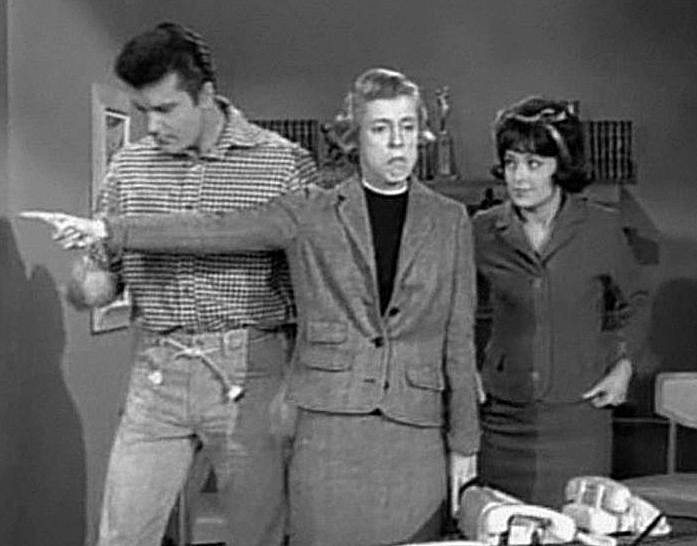
“Well, it’s very strenuous, I must say,” she said in a 1966 interview. “For approximately three years, I’ve had no personal life, I guess you could call it. I’ve done nothing but study from 8 o’clock in the morning till about 6:30 at night. Then on three evenings out of every week I went to a night class, too.”
“I had acting classes, voice, singing, body building — everything, absolutely everything. Which is necessary, you know.”
Though certainly talented and beautiful, Tate only managed to land commercials, uncredited roles — “Beautiful Girl” in The Americanization of Emily), 15 episodes of The Beverly Hillbillies, and a bit part in The Man From U.N.C.L.E..
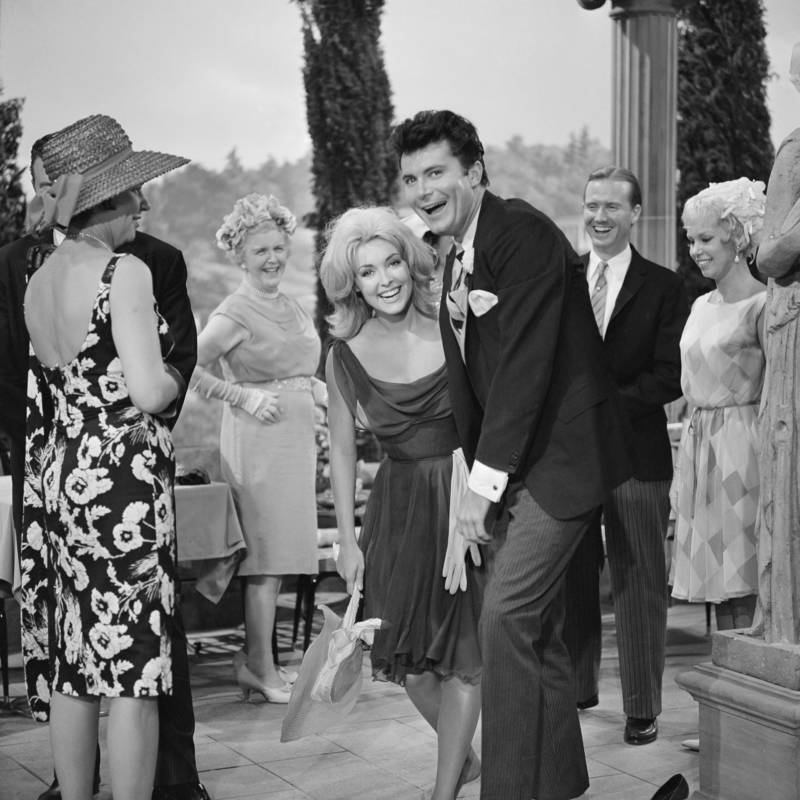
The most fulfilling experience as an actress she’d had during this time was shooting a small role with Elizabeth Taylor and Richard Burton. The shoot for the film Sandpiper was in Big Sur — a meditative refuge for writers like Hunter S. Thompson and Tom Wolfe — which she adored and returned to often.
Tate was somewhat dissuaded by her options at this time, but her luck was about to change.
Hitting It Big In Hollywood
In 1967, Tate starred in four films: Eye of the Devil, Don’t Make Waves, The Fearless Vampire Killers, and Valley of the Dolls. It was Valley of the Dolls that made the biggest splash for Tate.
The film adaptation of Jacqueline Susann’s 1966 bestseller was a huge hit. At last, the actress had achieved the level of adoration and artistic enrichment she dreamed of.
Aboard the Princess Italia, which sailed from Italy to California to promote the film, Tate was the belle of the ball. She was nominated for a Golden Globe the following year and booked two projects — one opposite Dean Martin, the other with Orson Welles.
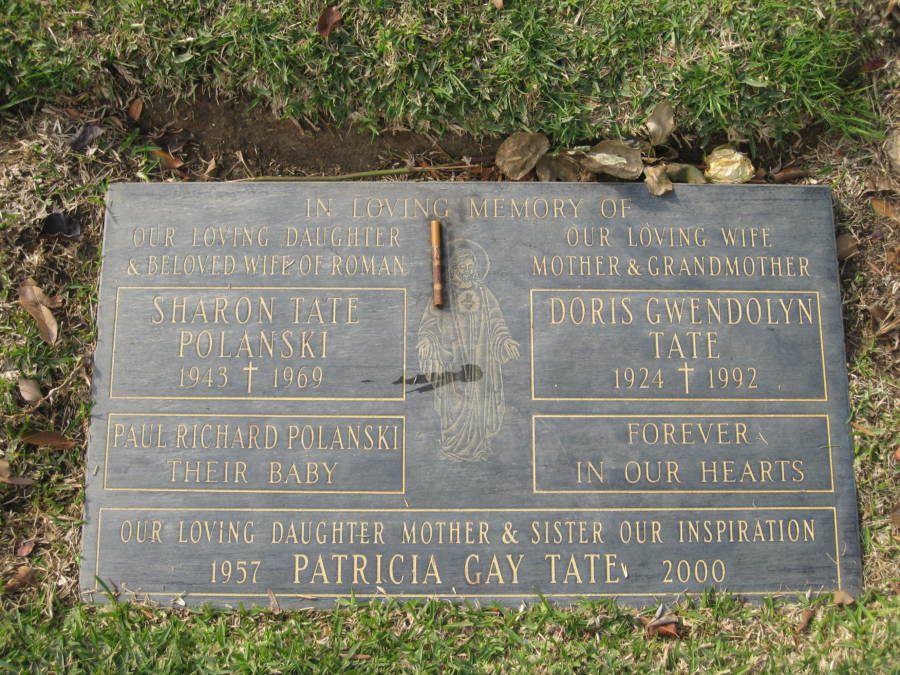
Of course, none of these professional triumphs would be as consequential as her relationship with Roman Polanski, whom she met at a party hosted by Ransohoff. The Holocaust-surviving, multicultural auteur had just experienced huge success with his first English-language film, Repulsion. He had a reputation for being a playboy.
But Polanski had already been married before, but his wife dumped him. He wasn’t keen on jumping into another relationship just yet.
Nonetheless, he courted Tate vigorously during the production of The Fearless Vampire Killers, which he directed and starred in, and photographed her half-nude for a Playboy shoot. Tate had been dating hairstylist Jay Sebring since 1964, and Sebring’s visit to London after Vampire Killers wrapped made it official; Tate told him she had fallen in love with Polanski.
Tate Gets Married To Roman Polanski
“I thought she was quite pretty, but I wasn’t at that time very impressed,” Polanski later told the Los Angeles Police Department. “But I then saw her again. I took her out. We talked a lot, you know. At that time I was really swinging. All I was interested in was to fuck a girl and move on.”
According to Polanski, the pair was on their best behavior for the first few months of production for Vampire Killers but began an intimate relationship before wrapping.
“She was so sweet and so lovely that I didn’t believe it, you know,” he told police. “I’d had bad experiences and I didn’t believe people like that existed… She was fantastic. She loved me.”
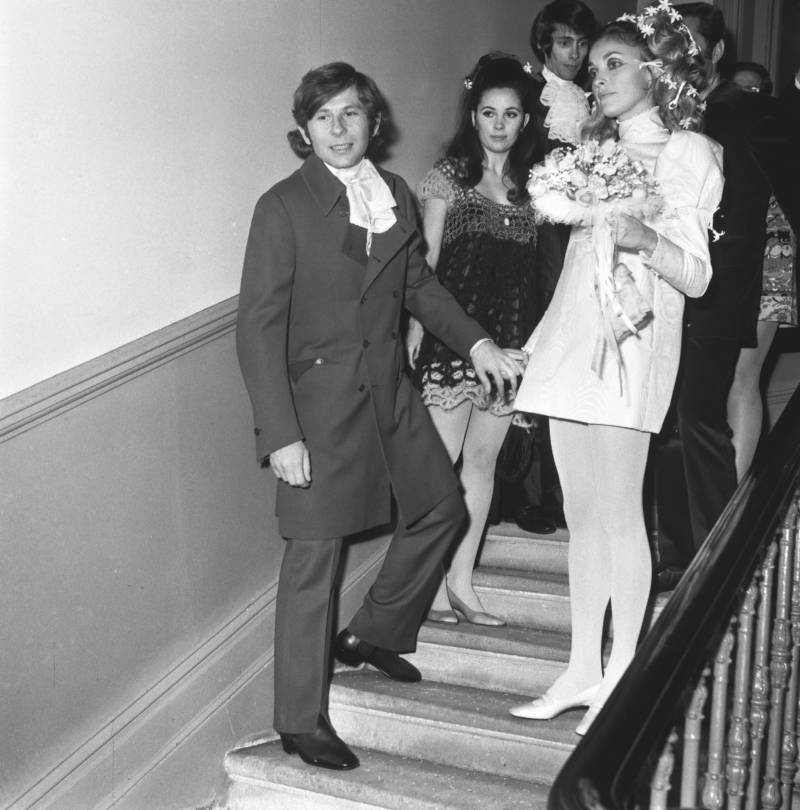
At the same time, Polanski was still stuck in his ways; the relationship wasn’t monogamous, at least not on his behalf. Tate was aware of his dalliances but still stood by him.
“I said, ‘You know how I am; I screw around.’ And she said, ‘I don’t want to change you.’ She was ready to do everything, just to be with me,” he said. “She was a fucking angel. She was a unique character who I’ll never meet again in my life.”
Sharon Tate and Roman Polanski married in London. It was January 20, 1968, and the director’s horror classic, Rosemary’s Baby, was about to terrify audiences across the nation. Photographs of Tate, Polanski, and Mia Farrow at the film’s premiere in Cannes depict a jovial, celebratory scene.
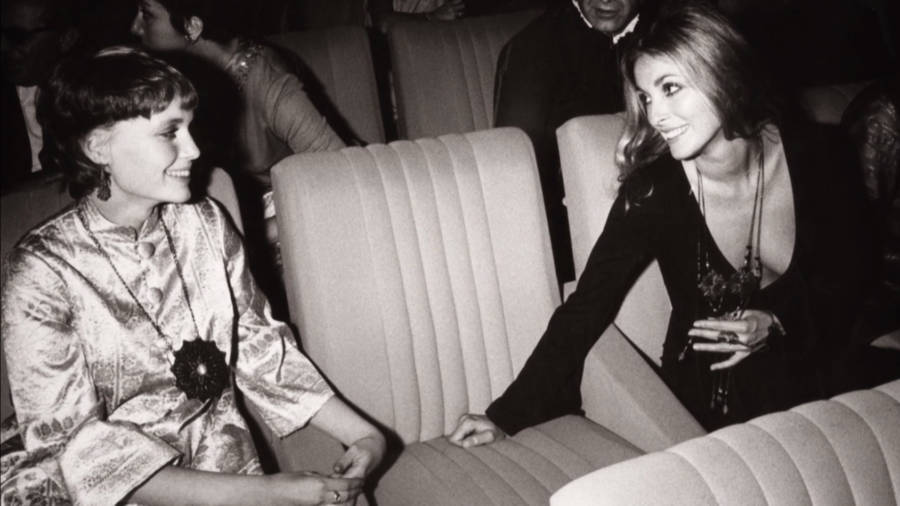
The parallels between art and real-life regarding Rosemary’s Baby and Sharon Tate’s tragic demise are quite ominous. In the film, an innocent, beautiful woman gets taken advantage of by a nefarious group of elites, while her husband does nothing to help. Rather, she is his sacrifice to them.
While there’s no indication whatsoever that Polanski was aware of the impending Manson murders, the director’s personal weaknesses have given conspiracy theorists enough room to establish that narrative as considerably plausible.
It didn’t help matters much that the lead occultists in the film was named Roman, of course.
Sharon Tate’s Pregnancy And Her “Fairy Tale” Life Just Before Her Murder
Sharon Tate became pregnant in late 1968. Whispers that she was using the baby as a means to prevent her marriage from collapsing swept the Hollywood hills. Friends of hers claimed she waited to tell her husband the news until it was too late for an abortion.
“I guess I kind of live in a fairy tale world,” she said. “We have a good arrangement; Roman lies and I pretend to believe him.”
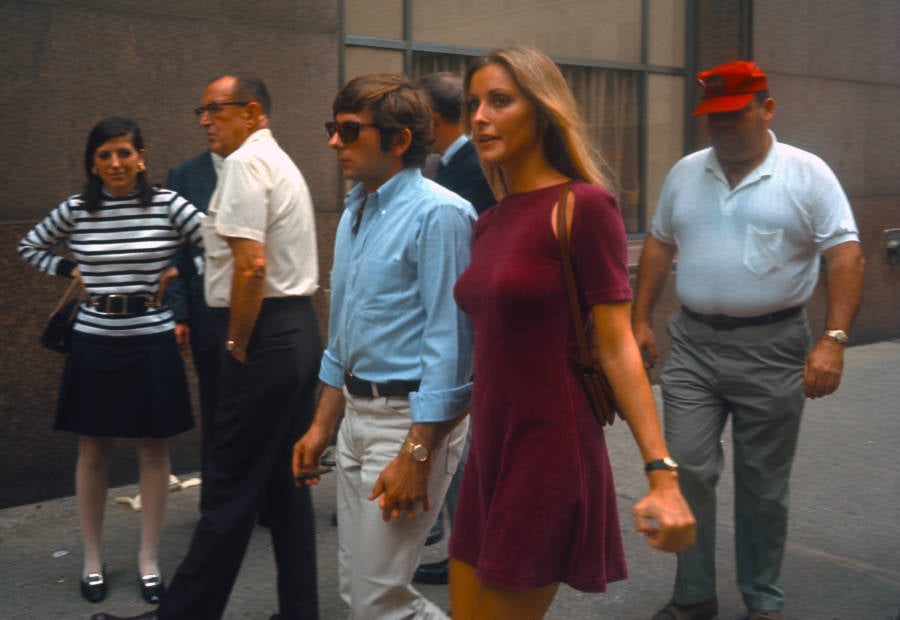
In February 1969, the couple moved into 10050 Cielo Drive. The house was situated near Benedict Canyon in the Santa Monica Mountains, overlooking Beverly Hills and Bel Air. They rented it from talent manager Rudy Altobelli. William Garretson, the property’s caretaker, lived in the guest house behind the main gate.
The previous tenant, Terry Melcher, had recently met none other than Charles Manson. Mutual friend Gregg Jakobson introduced Manson, an aspiring singer-songwriter, to Melcher, son of Doris Day who was in the music business himself.
Melcher was unimpressed with Manson’s “rather peculiar” music.

While Tate and Polanski were in Europe in March 1969, Polanski’s friend Wojciech Frykowski and his girlfriend Abigail Folger — heiress to the Folger coffee fortune — moved into the house. Tate returned in July, taking a cruise ship due to her advanced pregnancy.
The plan was for her two friends to live with Tate until Polanski returned for the birth of the child. Unfortunately, things turned out worse than anyone could’ve imagined.

The three of them, along with Tate’s ex Jay Sebring, went to El Coyote Cafe on Beverly Boulevard for dinner on August 8, the night of Sharon Tate’s murder. It was the last meal they ever had. Folger planned on flying to San Francisco the following morning to visit her mother.
But later that night, the death of Sharon Tate and her companions sent shockwaves through all of America.
The Brutal Death Of Sharon Tate At The Hands Of The Manson Family
That night, Charles “Tex” Watson, Susan Atkins, Patricia Krenwinkel, and Linda Kasabian invaded the sleepy house on Cielo Drive on Charles Manson’s orders. They were instructed to “totally destroy everyone in that house, as gruesome as you can. Make it a real nice murder, just as bad as you’ve ever seen. And get all their money.”
They murdered five people — not counting Sharon Tate’s unborn child.
The first person to discover the death of Sharon Tate and stumble upon this bloody, murderous mess was housekeeper Winifred Chapman the following morning.
In addition to Tate and her three friends, the Manson family killed 18-year-old Steven Parent, a friend of the home’s caretaker. Parent unluckily visited the house to offer Garretson a good deal on some audio equipment that night when Watson cut him with a knife and shot him four times.
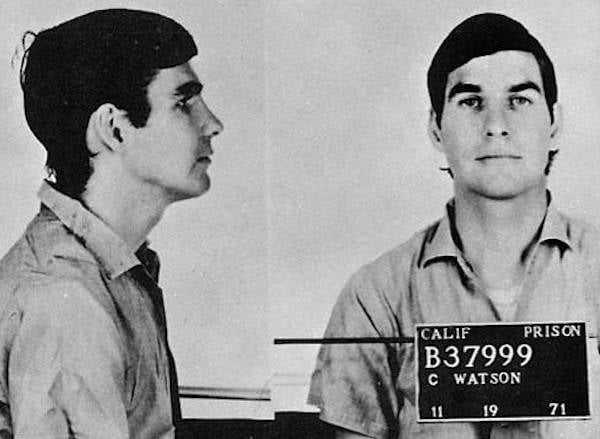
Sebring was stabbed seven times and shot once. Folger was stabbed 28 times, while her boyfriend, Frykowski, was shot twice, bludgeoned in the head 13 times, and stabbed a stunning 51 times.
According to Helter Skelter: The True Story of the Manson Murders, Frykowski awoke on the living room couch when Watson whispered in his girlfriend’s ear and kicked him in the head. Frykowski asked what the stranger was doing in the house, to which he received the most ominous answer imaginable.
“I’m the devil and I’m here to do the devil’s business.”
Sharon Tate’s death was caused by a long series of stab wounds. Five of the 16 wounds were lethal enough to kill her on their own, but Manson’s kill squad did more than that. With a rope around her neck, she was strung over a rafter. The other end was tied around Sebring’s neck.
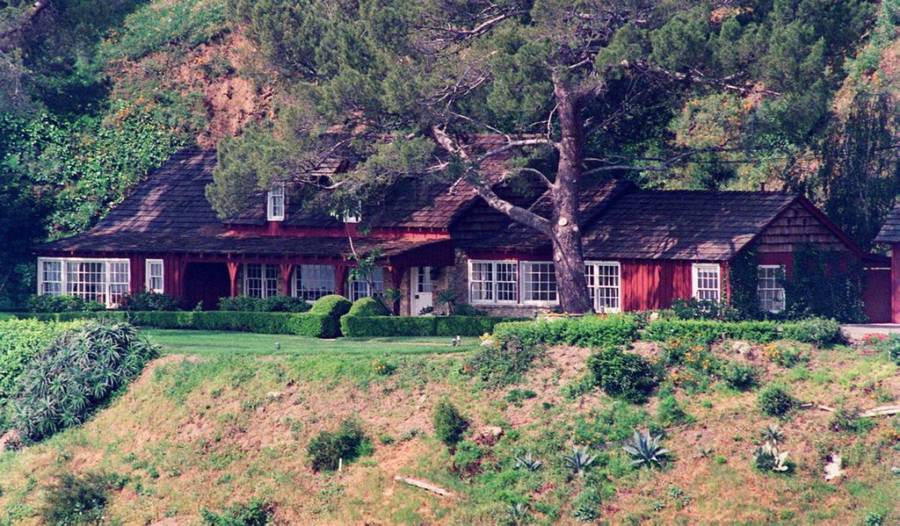
Atkins took a cloth and used Tate’s blood — possibly mixed with the blood of her unborn child — to write “PIG” on the front door.
In a baffling move, Roman Polanski agreed to a Life magazine photoshoot at the crime scene just after Sharon Tate’s murder. He’s seen next to the front door, still soiled with Tate’s blood, in one of the photographs.
The Grisly Crime Scene Left Behind After Sharon Tate’s Murder
“Roman, there’s been a disaster in a house… Your house,” Polanski’s friend and manager William Tennant told him over the phone. “Sharon is dead, and Voytek and Gibby and Jay.”
The police contacted Tennant, as Polanski was in London scouting locations for The Day of the Dolphin. Tennant was in the middle of playing tennis when he got the news. He’s the one who identified Tate, Frykowski, Folger, and Sebring. He had no clue who the 18-year-old was.
Polanski wasn’t sure what to make of the call. He suspected an accident — a fire, perhaps. He couldn’t imagine that he’d be getting news of Sharon Tate’s murder.

Just after Sharon Tate’s death, the house’s caretaker Garretson was initially considered a suspect. Having survived the bloodbath unscathed in the guest house, the police were suspicious in the early stages of the investigation.
A search of the house uncovered about 2.7 ounces of marijuana in a plastic bag a living room cabinet, an ounce of hashish, a gram of cocaine, and 10 pills of speed. Folger had 2.4 mg of MDA in her system, while Frykowski had .6 mg in his.
The police considered the possibility that this was a drug deal turned sour or that somebody’s reaction to any of these drugs resulted in paranoia-induced violence. That theory on Sharon Tate’s death didn’t last long.
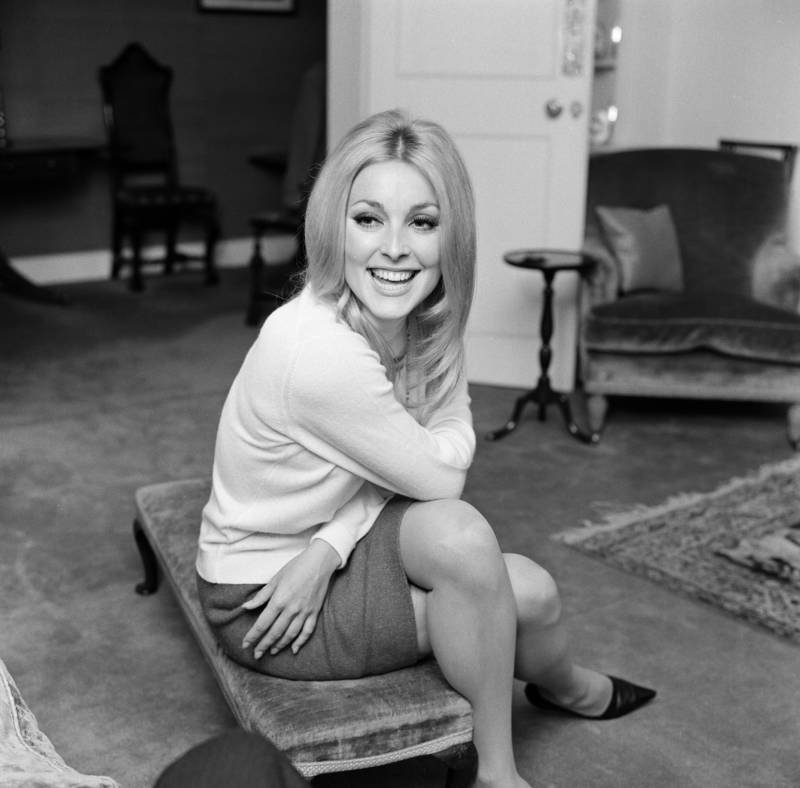
Polanski told the police that Share Tate had used LSD more than a dozen times, but that more recently she stuck to marijuana.
“And during her pregnancy there was no question,” he said. “She was so in love with her pregnancy she would do nothing. I’d pour a glass of wine and she wouldn’t touch it.”
The Aftermath Of Sharon Tate’s Death And The Prosecution Of The Manson Family
Charles Manson was adamant to his cult of devoted “family” members that Helter Skelter — a race war that would serve as a rebirth to society — was nigh. By December, police caught those responsible for the Tate murders. The killers had murdered Leno and Rosemary LaBianca as well, one day after the murder of Sharon Tate and her friends.
Polanski was harassed with countless questions about his marital trouble after Sharon Tate’s death, and about being distant from his pregnant wife as well as if the satanic themes in his films had any connection to the events of August 8 and Sharon Tate’s murder. The Life magazine photoshoot made some question his character.
The funeral for Sharon Tate and her son, Paul Richard Polanski, was held on Aug. 13 at the Holy Cross Cemetery in Culver City, California. It was a star-studded event with more than 150 guests, including Warren Beatty, Kirk Douglas, Peter Sellers, Steve McQueen, and Mamas and the Papas singer Michelle Phillips.
Mia Farrow, who portrayed the victim in Polanski’s Rosemary’s Baby a few years earlier, was too upset to attend.
On August 19, Polanski held a press conference about Sharon Tate’s death. He wanted to state the facts, say what he needed, and be done with the public nature of this matter. He called his late wife “beautiful” and a “good person.”
“The last few years I spent with her were the only time of true happiness in my life,” he said.
Tate’s mother, Doris, spent the rest of her years as a public advocate for victims’ rights, while Sharon’s sister Debra made sure the killers stayed imprisoned by representing the Tate family at parole hearings.
While Manson, Atkins, Watson, Krenwinkel, and Leslie Van Houten — who was involved in the LaBianca murders — were initially all sentenced to death for the murder of Sharon Tate and her companions, California’s laws were in flux. A moratorium on the death penalty in 1972 saw all of their sentences converted to life in prison instead for their roles in the Tate murders.
Atkins died in prison of natural causes in 2009. Van Houten, Watson, and Krenwinkel are still alive and behind bars. When Van Houten was recommended for parole in 2016 and 2017, then-Governor Jerry Brown rejected the motion. Governor Gavin Newsom denied her parole again in June 2019.
Charles Manson died behind bars in November 2017.
While it’s been half a century since the horrific events on Cielo Drive, the death of Sharon Tate still lingers on in the American psyche. This wasn’t merely the death of five individuals, but an undeniable curtain call on a period of innocent Americana that would never return.
After learning about the murder of Sharon Tate and her brief career in Hollywood, read about the teen killer who was caught because he took a Facebook selfie with the victim. Then, learn about William Desmond Taylor and the “crime of passion” that shocked early Hollywood.






